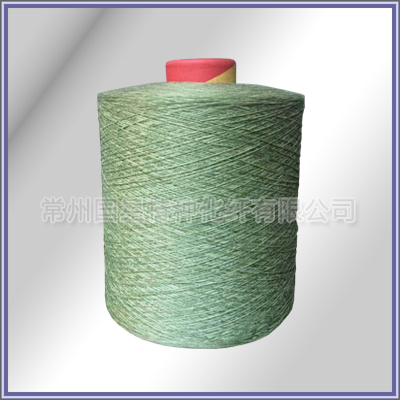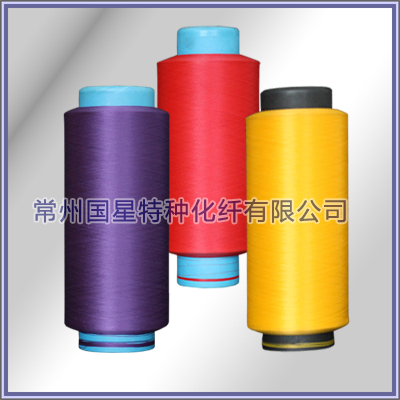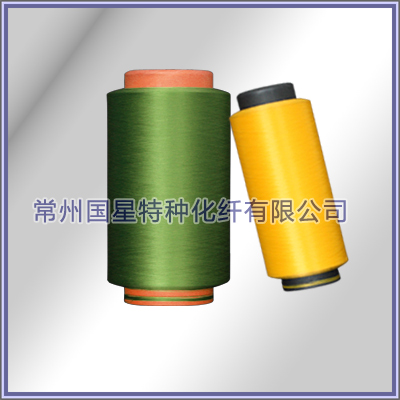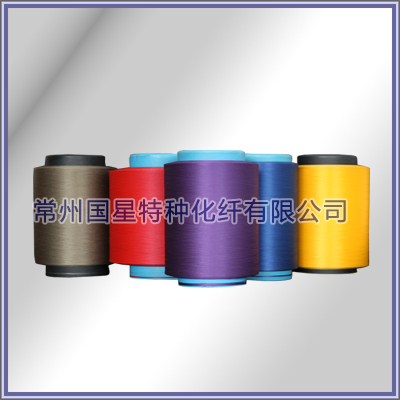Textile industry difficulties difficult to understand: 2547 companies have disappeared!
Recently, the Ministry of Industry issued more than 16,000 words of the "textile industry development plan (2016 - 2020)", which proposed textile and apparel exports accounted for the global market share to maintain basic stability.
The reality is that over the past few years, the number of textile enterprises in the rapid reduction of large textile enterprises are also in profit decline or even loss of the situation. Layoffs, business diversification, overseas factories have become a textile enterprises to avoid being eliminated means. So dilemma, such a paper plan really can save the textile industry?
The textile industry almost half of the business collapse of 2547 enterprises have disappeared
With the rise in the cost of China, the profit margins of the textile industry has been a serious impact. The collapse of the tide has appeared in the previous years.
According to CCTV reports, recently in Zhuji City, Zhejiang Province, Fengqiao Town, there are nine companies shut down, of which seven for the textile and garment enterprises. At present, Zhuji Fengqiao town garment factory from the original more than 50 has been reduced to more than 30, the Zhuji City, textile and garment enterprises, from more than 650 to the current 200-300 reduction. The number of textile workers decreased by more than 50%.
The situation in the country is not optimistic. According to the National Bureau of Statistics data, as of June 2016, China's operating income of more than 20 million yuan of textile enterprises units for the 19937, compared with the number of textile enterprises in 2011 compared to 22,484 units decreased by 2547. More than 2,000 textile enterprises disappeared in the statistical data on the embodiment is only the data changes, and in the disappearance of the number of blood and tears behind it?
And even if there is no disappearance of the enterprise, its production business has also been changing, a large number of textile enterprises are turning production to overseas, according to listed textile enterprises earnings, including Huafu color spinning, Lutai A, Blum Oriental and other large textile Enterprises have set up factories overseas, while the domestic part of the factory shutdown. Blum Oriental began construction in Vietnam in early 2013, just three years, the Vietnamese plant spindles production capacity accounted for 40% of the company's total production capacity.
60% of the company in the layoffs listed companies also Tingbu Zhu
In fact, not only a large number of small textile enterprises in the disappearance, even in the A-share listed large textile enterprises, is also experiencing a profit decline or even loss of suffering.
According to Wind data, in the A-share listed 36 textile enterprises, the first half of the 10 at a loss, the loss ratio of more than 25%; and in 2010 but only a textile enterprise losses. In the first half of 2016, the net profit of listed textile enterprises also continued the trend of the previous three years, net profit fell more than 10% year on year.
In the context of the decline in profits of listed companies, and even losses; as a labor-intensive industries typical of the textile industry, opened the layoff mode. According to statistics, in 2015 in the A-share listed 36 textile enterprises, 21 in layoffs, layoffs accounted for nearly 60%; and such layoffs since 2013 has already begun.
In addition to layoffs, many textile companies began to seek transformation, this transformation is difficult to define the main business upgrade, more is to enter other industries. To Changshan shares of textile enterprises, for example, 2015 Changshan shares of the revenue not only includes cotton, clothing and other bedding, including system integration and industry solutions, customized software and services. Jiangsu Sunshine main business in addition to clothing, fabrics, but also include such an electric industry.
Internal and foreign trapped, a paper plan really can solve the problem?
In addition to the domestic textile industry due to rent, labor and other rising costs facing difficulties, the foreign environment is also a serious challenge to China's textile enterprises. According to CCTV financial reports, Zhuji City, Zhejiang Province, a textile business foundry export price of each suit is 470 yuan, and the price has not changed for ten years. The price of ten years behind the same is the decline in the bargaining power of Chinese textile enterprises and comparative advantage in the loss. Which from the Chinese textile export growth rate can also see clues.
According to the General Administration of Customs data, as of August this year, China's textile exports fell again by nearly $ 1 billion. And in 2015 China's textile and garment exports have both both into a negative growth.
Ministry of Industry and Commerce in the "textile industry development plan (2016 - 2020)" also bluntly: China's textile industry development is facing the developed countries "re-industrialization" and the developing countries to accelerate the industrial process of the double squeeze, Asia, Africa, the development The national labor cost advantage is obvious; the international comparative advantage of China's textile industry is weakening.
In the context of negative growth in the export of textile industry, the Ministry of Industry and the Ministry of Industry and Technology put forward the "13th Five-Year Plan" period, China's textile enterprises above designated size industrial average annual growth rate remained at 6% to 7%; textile and apparel exports accounted for global market share to maintain basic stability.
The reality is that over the past few years, the number of textile enterprises in the rapid reduction of large textile enterprises are also in profit decline or even loss of the situation. Layoffs, business diversification, overseas factories have become a textile enterprises to avoid being eliminated means. So dilemma, such a paper plan really can save the textile industry?
The textile industry almost half of the business collapse of 2547 enterprises have disappeared
With the rise in the cost of China, the profit margins of the textile industry has been a serious impact. The collapse of the tide has appeared in the previous years.
According to CCTV reports, recently in Zhuji City, Zhejiang Province, Fengqiao Town, there are nine companies shut down, of which seven for the textile and garment enterprises. At present, Zhuji Fengqiao town garment factory from the original more than 50 has been reduced to more than 30, the Zhuji City, textile and garment enterprises, from more than 650 to the current 200-300 reduction. The number of textile workers decreased by more than 50%.
The situation in the country is not optimistic. According to the National Bureau of Statistics data, as of June 2016, China's operating income of more than 20 million yuan of textile enterprises units for the 19937, compared with the number of textile enterprises in 2011 compared to 22,484 units decreased by 2547. More than 2,000 textile enterprises disappeared in the statistical data on the embodiment is only the data changes, and in the disappearance of the number of blood and tears behind it?
And even if there is no disappearance of the enterprise, its production business has also been changing, a large number of textile enterprises are turning production to overseas, according to listed textile enterprises earnings, including Huafu color spinning, Lutai A, Blum Oriental and other large textile Enterprises have set up factories overseas, while the domestic part of the factory shutdown. Blum Oriental began construction in Vietnam in early 2013, just three years, the Vietnamese plant spindles production capacity accounted for 40% of the company's total production capacity.
60% of the company in the layoffs listed companies also Tingbu Zhu
In fact, not only a large number of small textile enterprises in the disappearance, even in the A-share listed large textile enterprises, is also experiencing a profit decline or even loss of suffering.
According to Wind data, in the A-share listed 36 textile enterprises, the first half of the 10 at a loss, the loss ratio of more than 25%; and in 2010 but only a textile enterprise losses. In the first half of 2016, the net profit of listed textile enterprises also continued the trend of the previous three years, net profit fell more than 10% year on year.
In the context of the decline in profits of listed companies, and even losses; as a labor-intensive industries typical of the textile industry, opened the layoff mode. According to statistics, in 2015 in the A-share listed 36 textile enterprises, 21 in layoffs, layoffs accounted for nearly 60%; and such layoffs since 2013 has already begun.
In addition to layoffs, many textile companies began to seek transformation, this transformation is difficult to define the main business upgrade, more is to enter other industries. To Changshan shares of textile enterprises, for example, 2015 Changshan shares of the revenue not only includes cotton, clothing and other bedding, including system integration and industry solutions, customized software and services. Jiangsu Sunshine main business in addition to clothing, fabrics, but also include such an electric industry.
Internal and foreign trapped, a paper plan really can solve the problem?
In addition to the domestic textile industry due to rent, labor and other rising costs facing difficulties, the foreign environment is also a serious challenge to China's textile enterprises. According to CCTV financial reports, Zhuji City, Zhejiang Province, a textile business foundry export price of each suit is 470 yuan, and the price has not changed for ten years. The price of ten years behind the same is the decline in the bargaining power of Chinese textile enterprises and comparative advantage in the loss. Which from the Chinese textile export growth rate can also see clues.
According to the General Administration of Customs data, as of August this year, China's textile exports fell again by nearly $ 1 billion. And in 2015 China's textile and garment exports have both both into a negative growth.
Ministry of Industry and Commerce in the "textile industry development plan (2016 - 2020)" also bluntly: China's textile industry development is facing the developed countries "re-industrialization" and the developing countries to accelerate the industrial process of the double squeeze, Asia, Africa, the development The national labor cost advantage is obvious; the international comparative advantage of China's textile industry is weakening.
In the context of negative growth in the export of textile industry, the Ministry of Industry and the Ministry of Industry and Technology put forward the "13th Five-Year Plan" period, China's textile enterprises above designated size industrial average annual growth rate remained at 6% to 7%; textile and apparel exports accounted for global market share to maintain basic stability.
Related Information

 +86-519-86266888
+86-519-86266888 gxhx888@126.com
gxhx888@126.com



